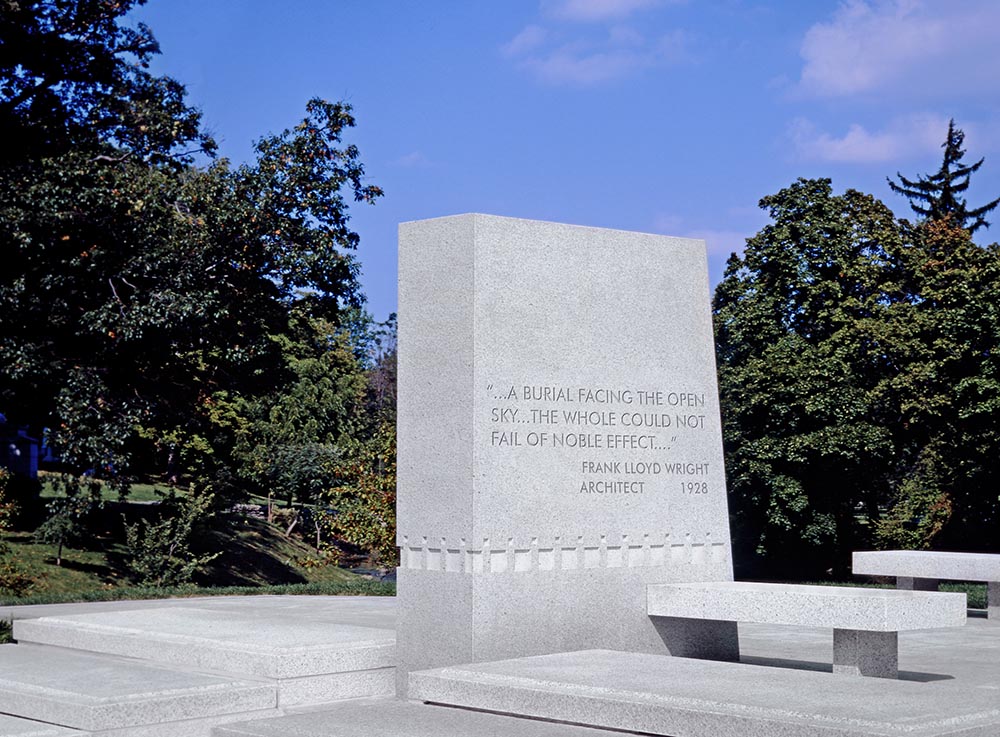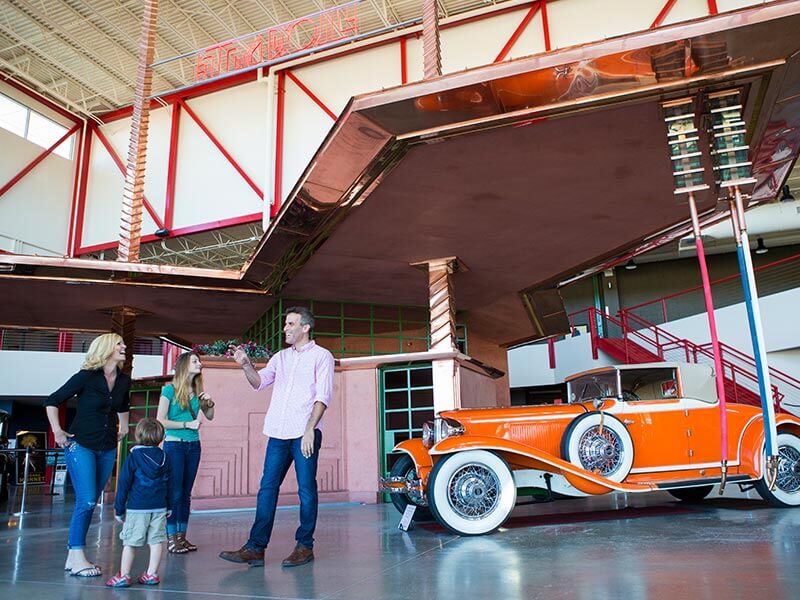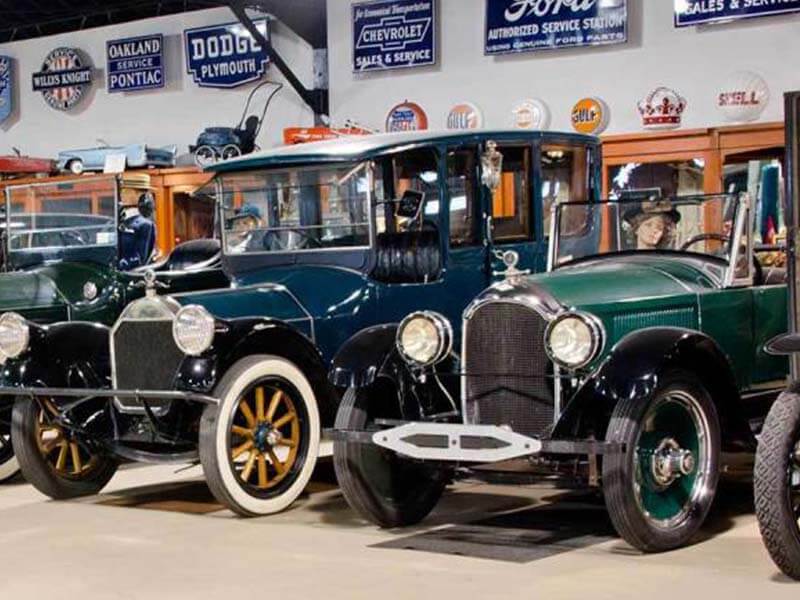A Legacy of Family and Friendship
Exploring Frank Lloyd Wright’s Buffalo

Frank Lloyd Wright’s legacy can be found all over Buffalo. The architect’s decades-long friendship with Darwin Martin, the man who may have been his most important patron, led to the construction of more than a half dozen of his designs here – and made Buffalo one of the premier destinations to tour Wright’s work more than a century later.
The bond between the two men began when Martin, a business executive in Buffalo, sought out an up-and-coming Wright in Chicago at the turn of the twentieth century and commissioned him to design a new home for his family as well as a headquarters for his employer, The Larkin Soap Company. Wright’s “Buffalo Venture” was pivotal for the young architect, whose career to that point was confined to Chicago. Securing work in Buffalo – then the eighth largest city in the United States and a booming center of industry and commerce –elevated his reputation and paved the way for future national renown.
Masterpieces Emerge

Buffalo had never seen the likes of what Wright had in store for the Martin family. Set among a neighborhood of wood-frame Victorian houses, the six-building Martin House Complex (1903-1906) featured sleek horizontal lines and a lack of ornamentation that distinguished it from the surrounding homes. It was also enormous. Consisting of the Martin House and the Barton House (built for Martin’s sister and her husband), as well as a conservatory, carriage house, gardener’s cottage and 100-foot-long pergola, the complex occupied more than 30,000 square feet on a one-and-a-half acre lot.
Today, many scholars regard the Martin House Complex – featuring hundreds of art glass windows, including Wright’s famous “Tree of Life” design, and an overhanging roof that blends the interiors with the surrounding landscape – as the finest example from the architect’s Prairie Period. Wright, never known for his modesty, described the plan for the Martin House as a “well-nigh perfect composition” and was said to keep a copy of the site plan above his drafting table for the rest of his career.
Other Buffalo commissions included the now demolished Larkin Administration Building, a new headquarters for Martin’s employer that revolutionized American office space with its elaborate, multi-floor central court illuminated by skylights. Martin’s colleagues William Heath and Walter Davidson also hired Wright to design their Buffalo homes, which remain private residences today.
Wright encountered a series of professional setbacks and personal tragedies as the century progressed, but his friendship with Martin, who provided the architect with work during some of his most challenging times, never faltered. Martin again called on Wright some two decades after completing his Buffalo house to design a summer home on the shores of Lake Erie. Wright ensured The Graycliff Estate (1926-1931) incorporated its stunning surroundings at every turn, from placing windows at the perfect locations for lake breezes and sunsets over the water to harvesting limestone from the beach below for its foundation and rocks for the hearth and chimney.
A Collapse and Revival of Greatness

Martin went bankrupt in The Great Depression and died penniless in 1935; Wright, who would live for another 25 years and undergo a late-career renaissance, wrote to Martin’s wife Isabelle that he felt as if he had lost one of his closest friends
The following years were not kind to Wright’s Buffalo designs. The Martin family abandoned its Buffalo house soon after Darwin’s death, leaving it deteriorating and open to the elements for more than a decade. An architect purchased the complex in the 1950s. In order to save the main house, he subdivided the property, which led to the demolition of the pergola, conservatory and carriage house and construction of apartments in their place. The Martin family also sold Graycliff in 1950 to an order of priests who would substantially alter the site from Wright’s original design. The Larkin Administration Building was demolished in 1950 following the company’s demise.

But much like Buffalo, which underwent its own decline in the late 20th century, Wright’s legacy has made an impressive comeback in recent years. The not-for-profit Martin House Restoration Corporation took over the complex in the 1990s following its designation as a National Historic Landmark and began a 25-year, $52 million project that restored the main house, demolished the adjacent mid-century apartments and reconstructed the pergola, conservatory and stable. A separate not-for-profit purchased the Graycliff Estate, which was under threat of demolition, in 1997 and began restoring the property. By the end of the 2010s, each property had been restored to its original grandeur and reopened to visitors for tours – a testament to Buffalo summoning its will to save its world-renowned architecture.
The Legacy Continues

These restorations coincided with a renewed interest in Wright’s work that led to the construction of three additional posthumous designs in Buffalo: The Blue Sky Mausoleum (2004) at Forest Lawn Cemetery, which Wright originally intended as the final resting place for Martin and his family; The Fontana Boathouse (2007), another unbuilt design conceived for a site at the University of Wisconsin, and The Frank Lloyd Wright Filling Station (2014) housed within the city’s Buffalo Transportation Pierce-Arrow Museum, which Wright had planned for a nearby intersection in 1927. All three can be seen alongside his original Buffalo designs on an All Wright, All Day Bus Tour, which is offered seasonally.
Today, Frank Lloyd Wright’s Buffalo has become a magnet for architecture fans from around the world and an emblem of the city’s transformation. It’s a testament to the decades-long friendship between architect and patron – and to the resilience of a city determined to preserve and restore its extraordinary legacy of great architecture.





